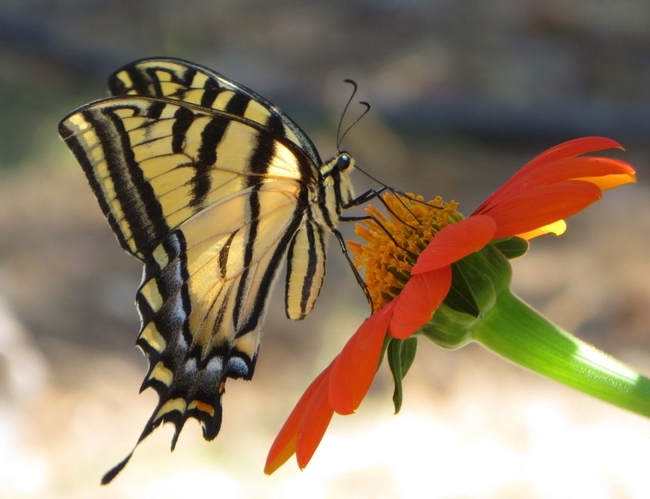By Jeanette Alosi, Butte County Master Gardener, December 19, 2014

The role of chemical pesticides in the decline of pollinators has been widely studied. Eric Mussen, a University of California Cooperative Extension expert on beekeeping (apiculturist), reported that researchers have found nearly 150 pesticide residues in samples of adult bees, pollen, and beeswax taken from beehives. Among these residues, which are thought to be involved in colony decline and loss of native pollinators, are limited amounts of neonicotinoid insecticides (neonics). A mass die-off of bumble bees in Oregon has been attributed to a mis-application of a neonicotinoid on linden trees. Although no direct link has been found between the neonics and what is known as Colony Collapse Disorder of honeybees, it is believed that these pesticides weaken the honeybee immune system, thus making the bees more susceptible to pathogens and diseases.
The neonics have several characteristics that are attracting attention. They are systemic pesticides, meaning they are absorbed into the plant tissue. Systemic pesticides can be applied in a number of ways; by drenching the soil; injecting directly into trees; used as a spray; and even applied as a seed coating. As these pesticides are translocated throughout the plant tissues, pollen and nectar become toxic. Pollinators that visit flowering plants to collect pollen and nectar are then exposed to the pesticide. Research has found that even small levels of neonics affect the ability of bees to navigate and impair their ability to detect odors. These are both important factors in their ability to forage for food.
Neonics are long-lasting and have been found to persist in soils for months and even up to six years in woody plants. Untreated plants can also absorb these chemicals from soil residues from previous applications. This is of particular concern because they are used constantly to coat corn and other seeds, leading to a cycle of soil contamination.
Because many products approved for home and garden use can be legally applied at rates significantly higher than the rates approved for agricultural crops, home gardeners may unwittingly be exposing pollinators to toxic levels of pesticides. Neonics found in common home and garden products include imidacloprid, clothianidin, thiamethoxam, acetamiprid, and dinotefuran.
What can you do to help? Avoid using systemic neonic products in your garden by checking the active ingredients on the label. Ask local nurseries if plants or seeds they sell are treated with a neonic product. Several home and garden retailers have already agreed to eliminate neonic-treated plants from their nurseries. When applying a fertilizer, avoid fertilizer-pesticide combinations because many of them contain neonics. If pesticide use is warranted to control worm pests, turn to one of the organic pesticides such as Bt. Most importantly, practice Integrated Pest Management or IPM techniques to control garden pests (see http://www.ipm.ucdavis.edu/). Chemical pesticides can negatively affect all insects, including ladybugs and other beneficial predators that keep destructive pests such as aphids under control.
Create a pollinator-friendly garden by planting patches of pesticide-free flowering plants. The goal is to provide food sources for pollinators throughout the year. The Xerces Society is a great resource for more information on the dangers of neonics and how to create a pollinator friendly garden. http://www.xerces.org.
|
Examples of neonicotinoid ingredients found in common garden insecticides: |
|